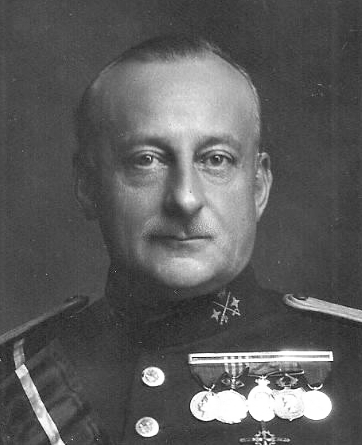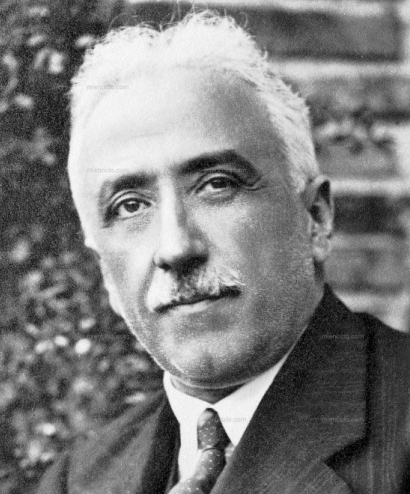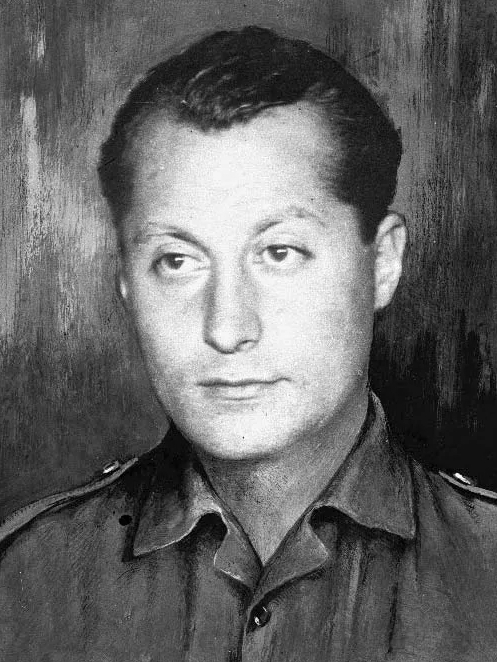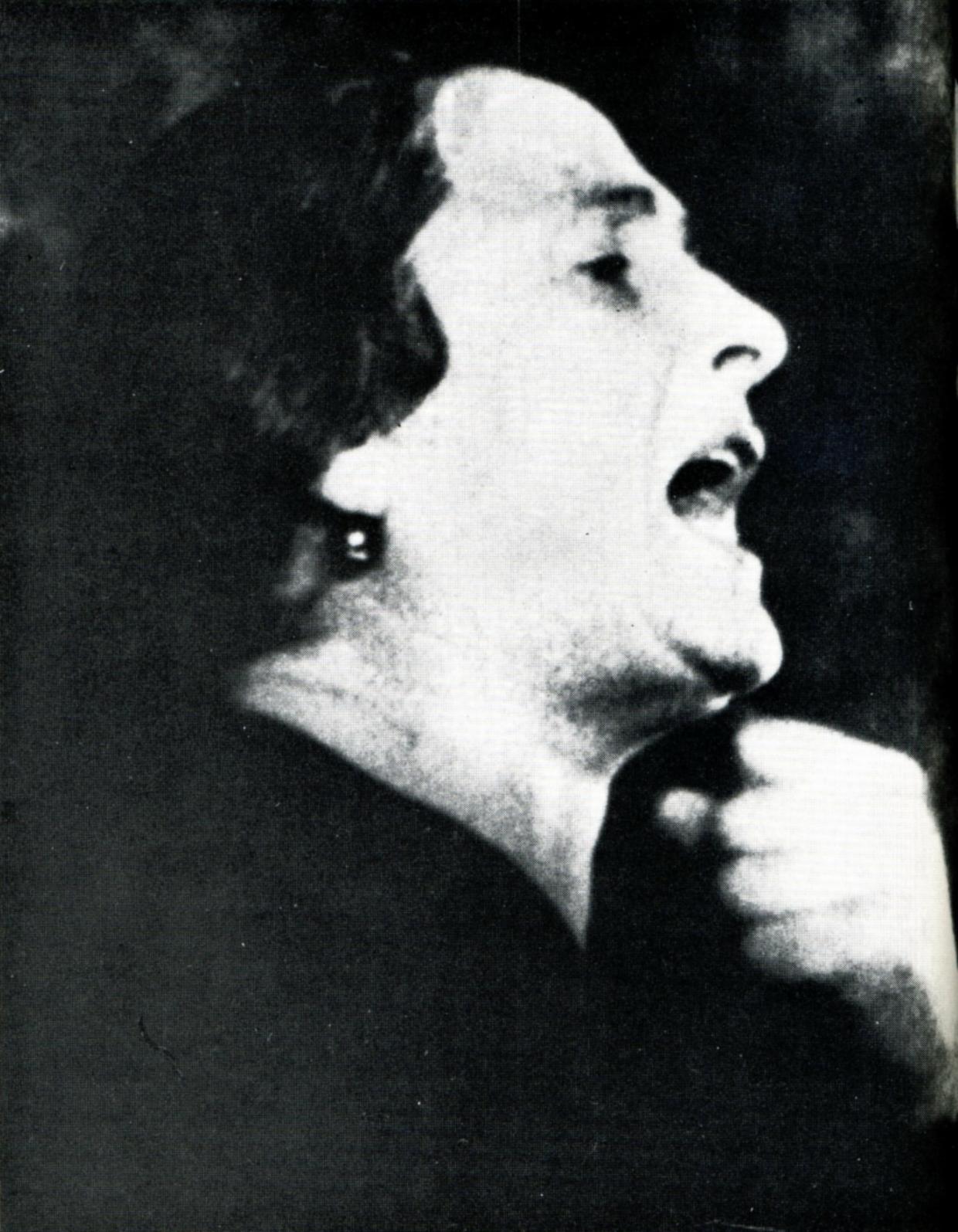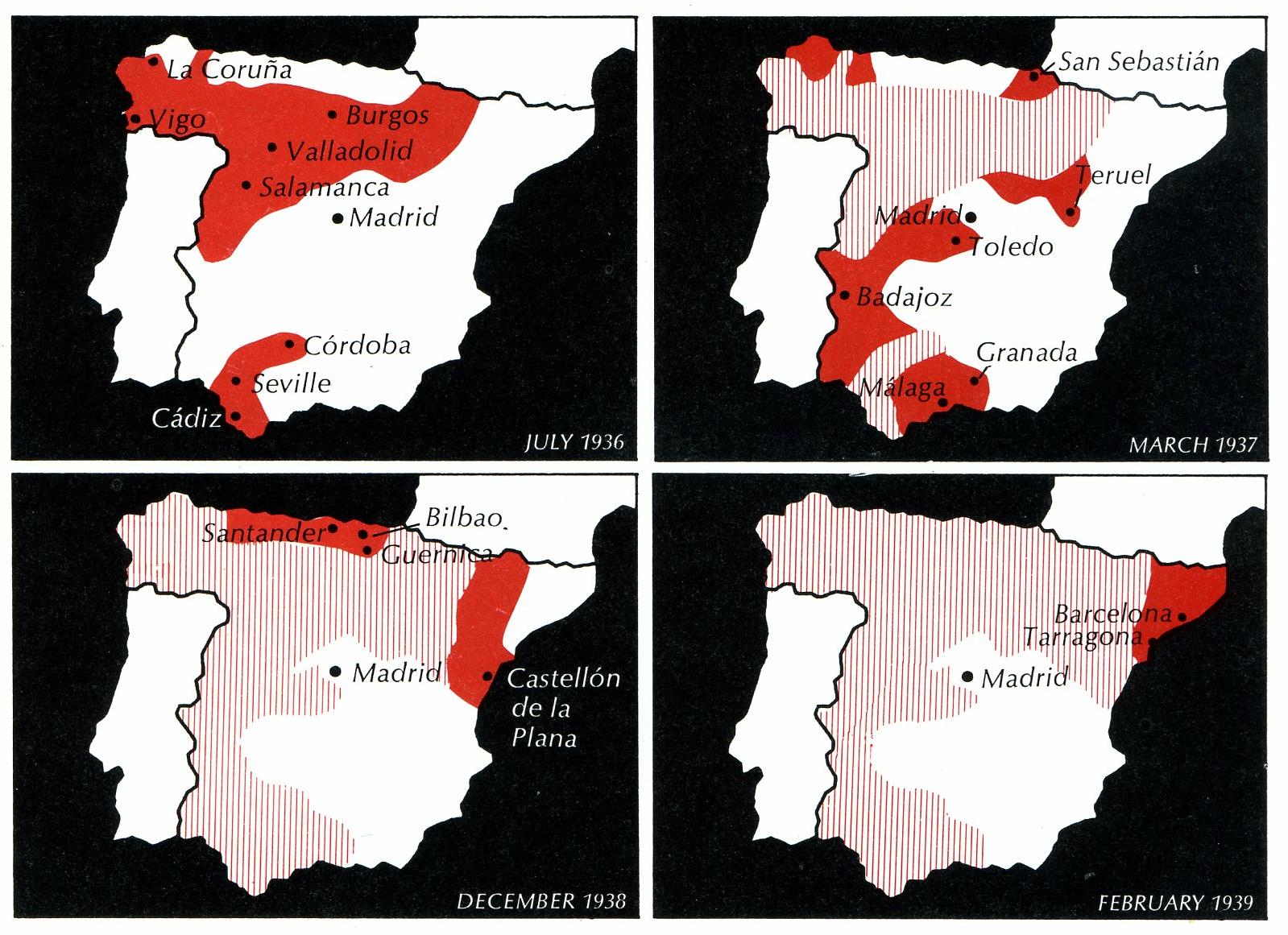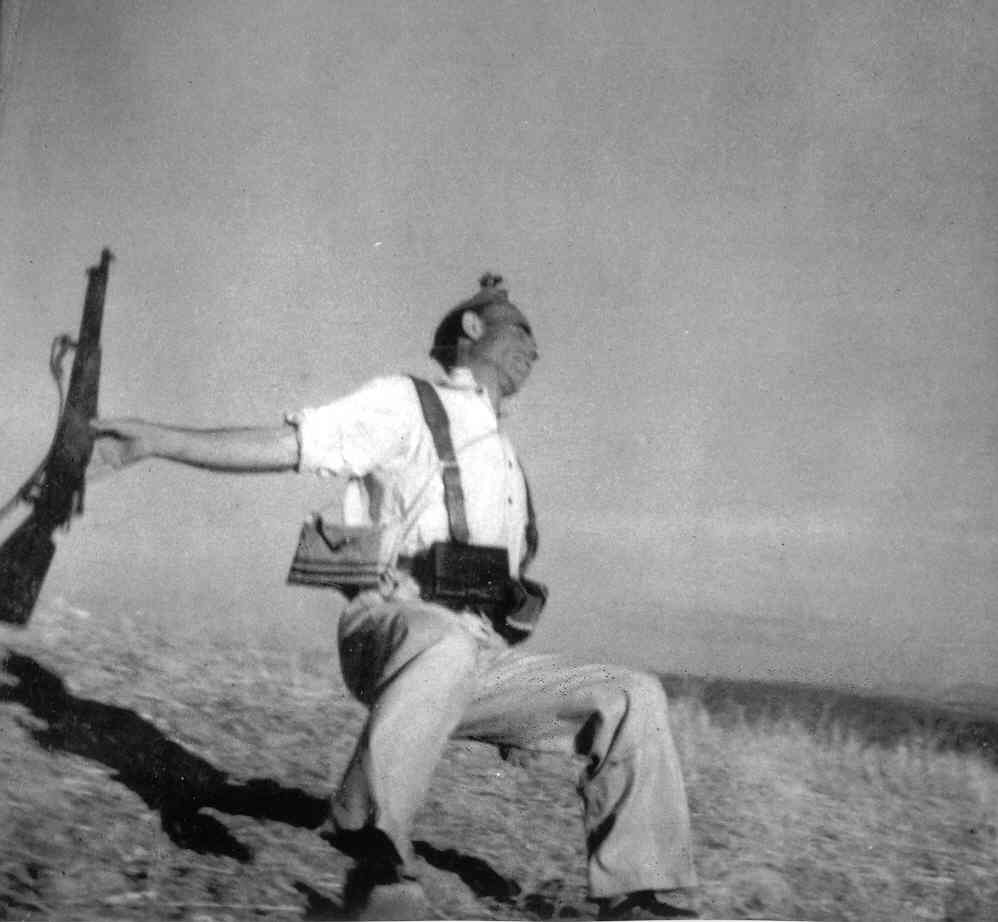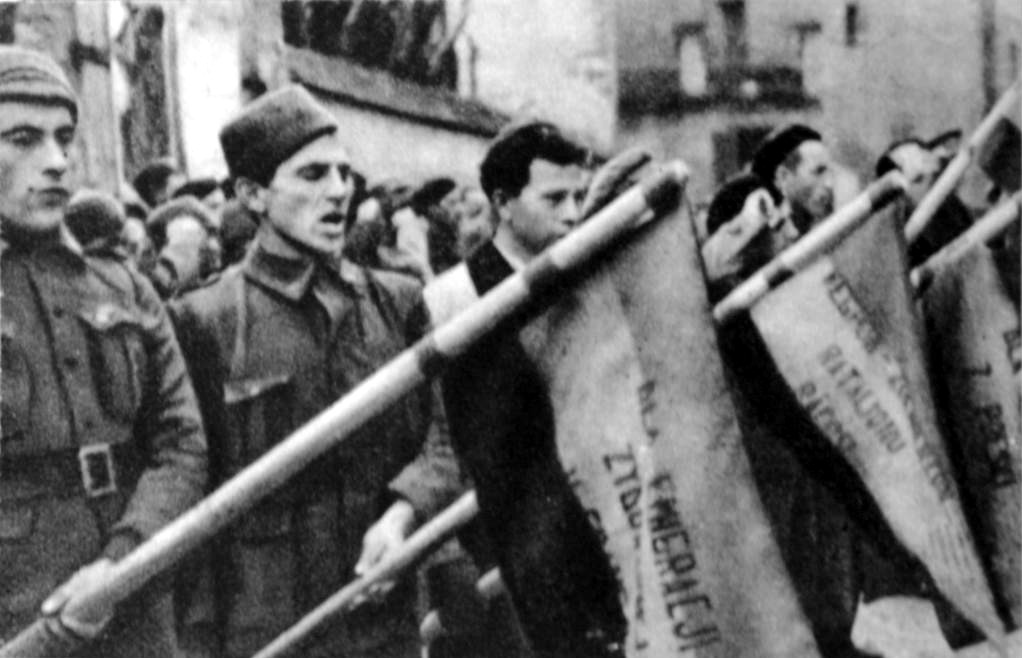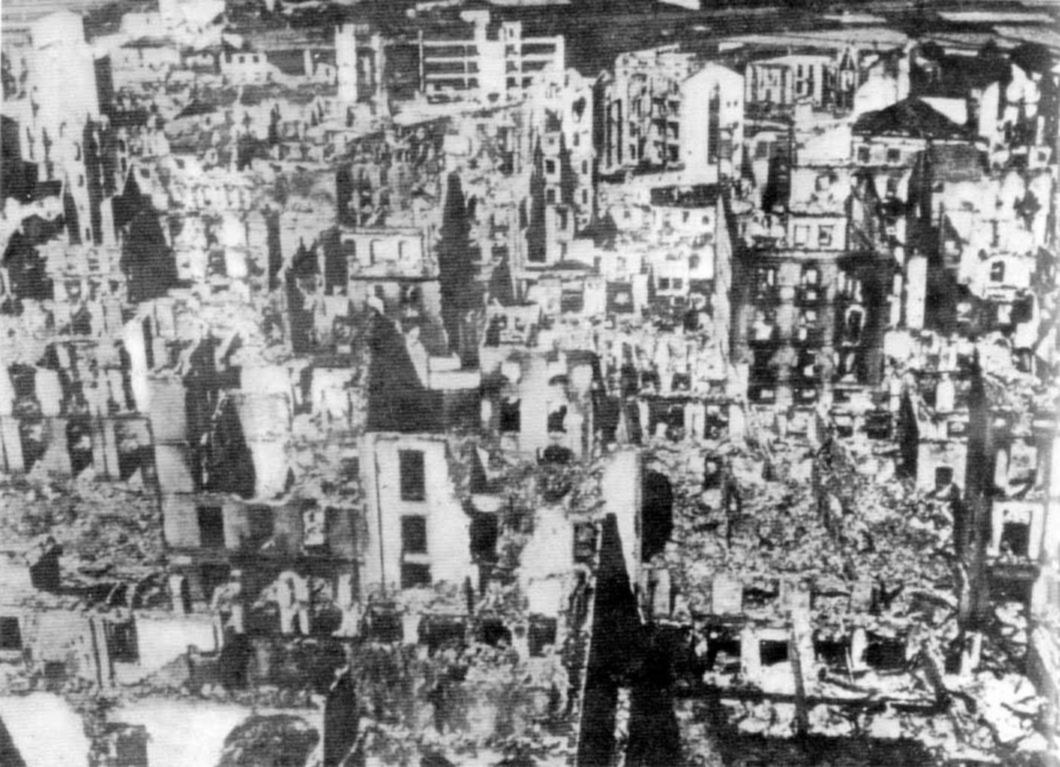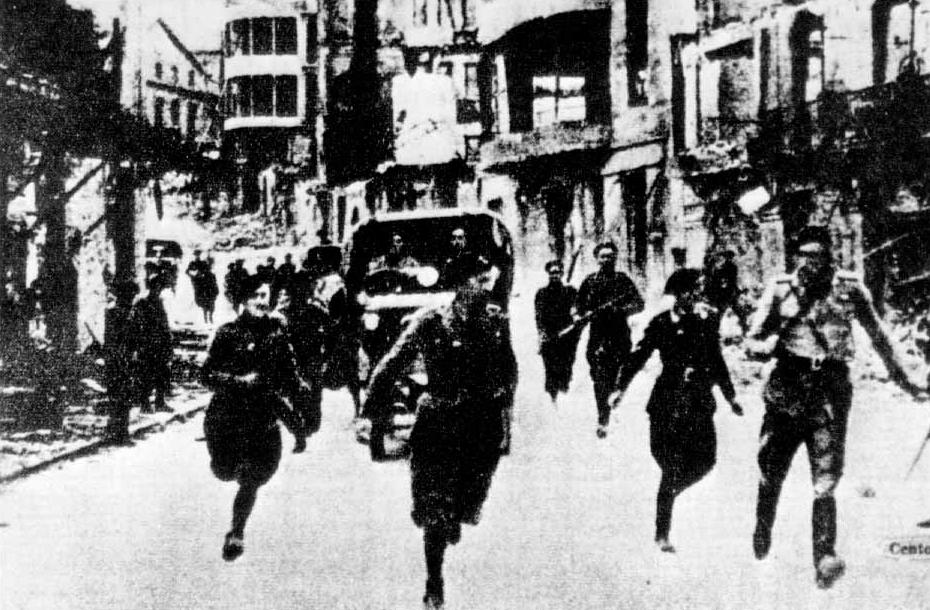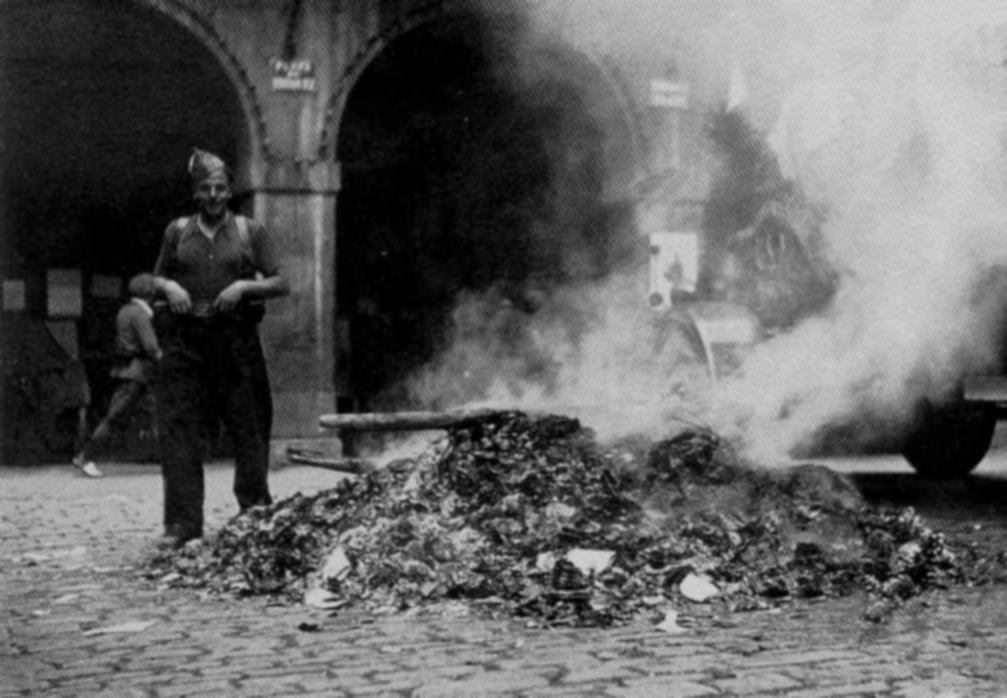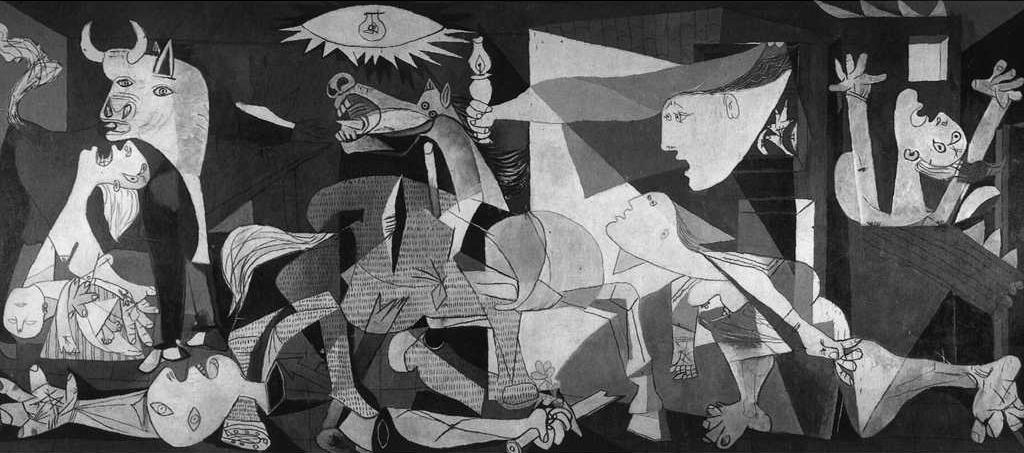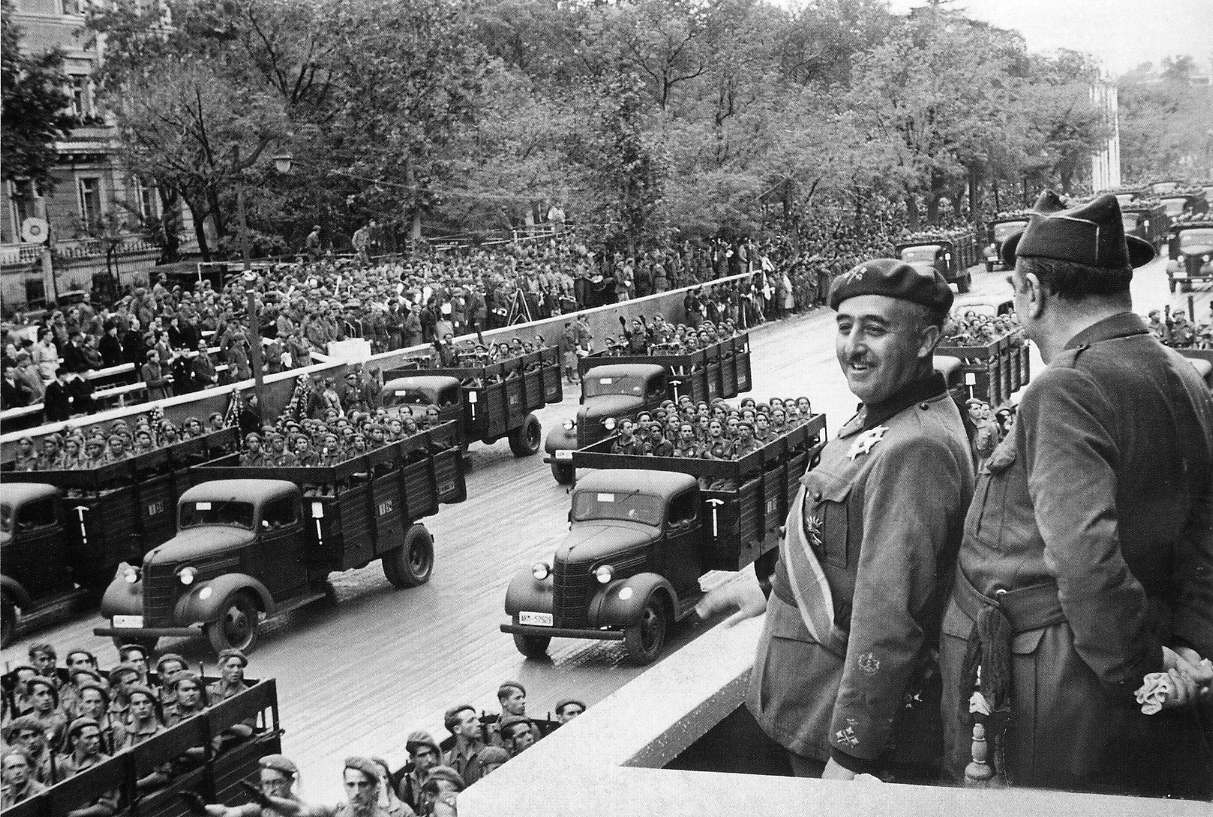15. DEPRESSION ... AND MORE DICTATORSHIP
(THE 1930s)


THE SPANISH CIVIL WAR
 Social stress in Spain
Social stress in Spain
 The creation of the Spanish Republic
The creation of the Spanish Republic
(1931)
 The Spanish Civil War (1936-1939)
The Spanish Civil War (1936-1939)
The textual material on page below is drawn directly from my work
A Moral History of Western Society © 2024, Volume Two, pages 150-153.
SOCIAL STRESS IN SPAIN |
RIVERA'S COUP D'ETAT (1923) |
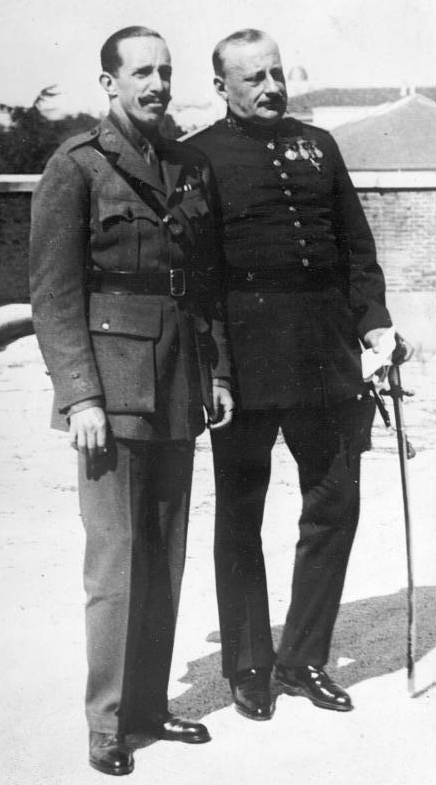
THE CREATION OF THE SPANISH REPUBLIC (1931) |
THE SPANISH CIVIL WAR (1936-1939) |
|
Franco intervenes (1936)
When, in July of 1936, the Asaltos murdered a prominent Fascist politician, all hell broke loose. Soldiers in Morocco loyal to the monarchy, "Nationalists" as they called themselves, revolted against the Republican government in Madrid. This was the signal in Spain itself for the Catholic monarchists in the military to rise up in revolt against the Republican government – in accordance with a plan carefully worked out beforehand by a young general, Francisco Franco Bahamonde. When Seville fell to the Nationalist troops, 200,000 workers (heavily Communist) were stirred to counter-action in Madrid by the passionate Dolores Irarruri ("la Pasionaria"). This was a call to arms of those loyal to the Leftist Republic. Europe gets involved
Seeing a fellow Popular Front Government in Spain under threat by Rightist forces, Leon Blum's Leftist Popular Front government in France quickly sent 30 French planes and pilots to help the Republican government crush the rebels. But in turn, Franco called upon the Nazis of Germany and the Fascists of Italy to come to the aid of the Nationalists' cause. By the end of July German and Italian planes were arriving in Morocco to assist Franco in his revolt against the Republican government of Spain. Thus the Spanish civil became from the very outset an international issue. The Spanish Civil War became an international issue not just because foreign countries wanted to help out one side or the other in the struggle – but because the war in Spain gave a number of countries (Germany, Italy and Russia) the opportunity to develop and test larger political, military and diplomatic strategies of their own. The Spanish Civil War was becoming a dry run for a larger war which seemed to be once again headed Europe’s way. Thus the Spanish suffered even greater anguish because of the military games played by these outside powers. In November 1936 Franco's Nationalists attempted to seize Madrid – but were held off by a Republican defense of the city at the Casa de Campo park and the University. Then Franco attempted to cow the city into submission by bombing it (except the wealthy – and supposedly pro-Nationalist – parts of the city). But this only stiffened the resolve of the Republican forces to hold Madrid at all costs. Battle of Guadalajara (8 March – 23 March 1937)
Mussolini's Italians and Franco's Nationalists combined forces to attack Madrid from Guadalajara. Vastly outnumbering the Republican forces, the Italians and Nationalists were at first successful in taking one small town after another. But bad weather – and the arrival of the International Brigade (with Russian volunteers involved) stiffened the Republican defense (though they were still outnumbered 2 to 1). The Republican air force was also operating from concrete runways – whereas their opponents were grounded with an airstrip of mud. Gradually the Republicans began to push the Italians and Nationalists into full retreat. The Italians lost some 6,000 men in the action – and Mussolini lost a huge amount of prestige, for he had personally organized the Italian effort in order to gain the prestige of what he originally thought was going to be a grand victory. The bombing of Guernica, April 26, 1937
The bombing of Guernica was an aerial attack by the German Luftwaffe squadron known as the Condor Legion against the Basque city of Guernica (Basque: Gernika). Guernica itself was of no particular strategic importance in the civil war itself, lying well outside the center of the struggle. But it did give the Germans and the Italians the opportunity to try out their new military weapons and assault techniques. Hundreds of civilians died in the bombardment ... much to the shock of the Europeans who still believed that wars should be fought only by armed troops. That view would now be greatly revised. The battle of Teruel
The battle of Teruel was fought in and around the city of Teruel in December 1937-February 1938. It was one of the bloodiest actions of the war. The city changed hands several times, first falling to the Republicans and eventually being re-taken by the Nationalists. In the course of the fighting, Teruel was subjected to heavy artillery and aerial bombardment. The two sides suffered up to 100,000 casualties between them in the three-month battle. |
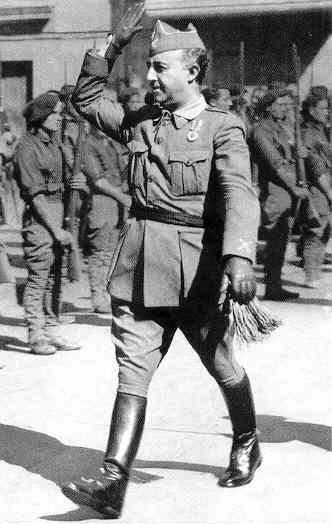
Spanish Communist Dolores
Ibarruri ("La Pasionaria") exhorting Spaniards to defend
the "Loyalist" Republic against Franco and his rebel Falangists
(or "Nationalists," as they called themselves)
Nicolas Fasciano
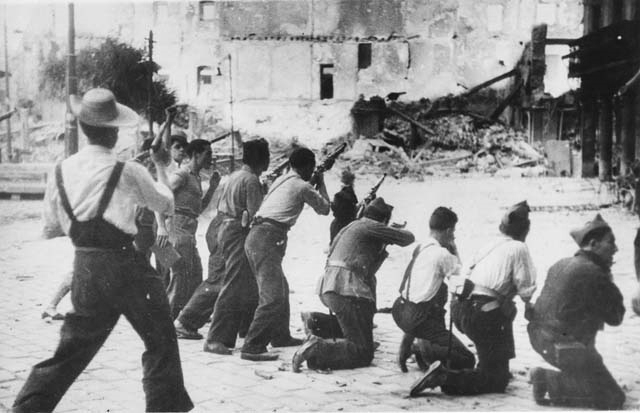
The famous Alcazar in Toledo,
where the Nationalists held out for days against the Republicanists,
was razed to the ground - August 1936.
Photo shows Republican
militia closing in on Nationalists barricaded in the ruins of the Alcazar in Toledo."
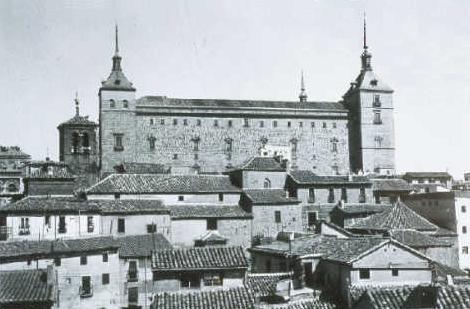
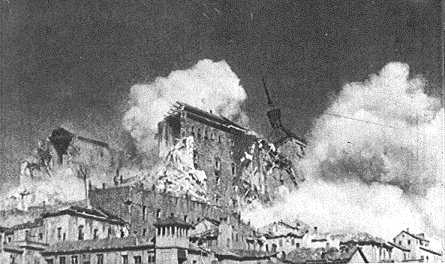
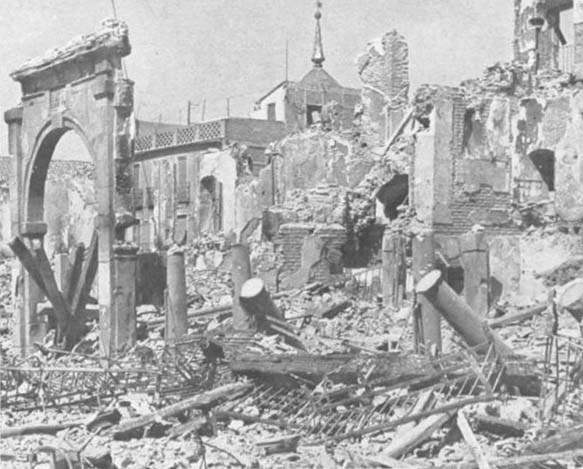
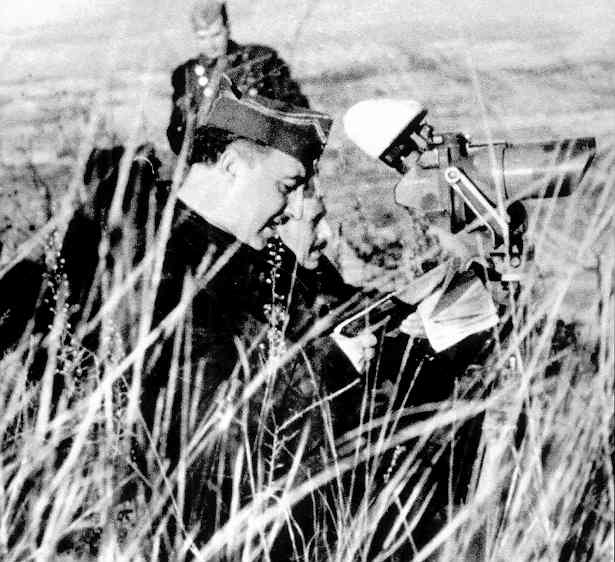
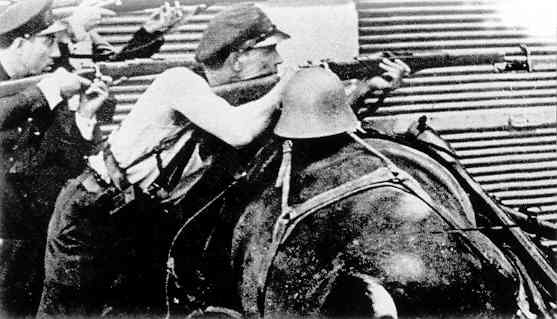
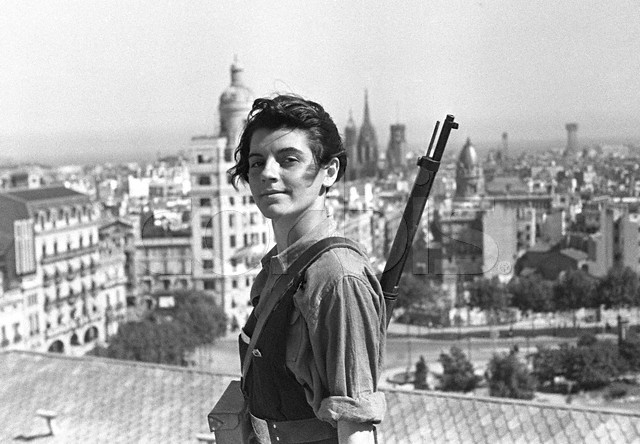
Militia Member Poses Atop Building in Barcelona – July 21, 1936. Marina Jinesta, member of the militia youth group "Unified Socialist Youths," poses on the terrace of the Colon hotel, where an office of enlistment for the militia group is located.
Robert Capa
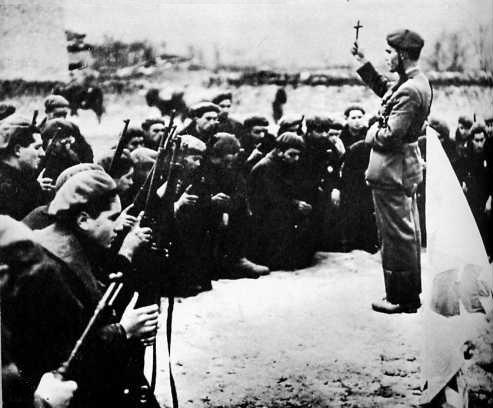
Éditions Ruedo ibérico
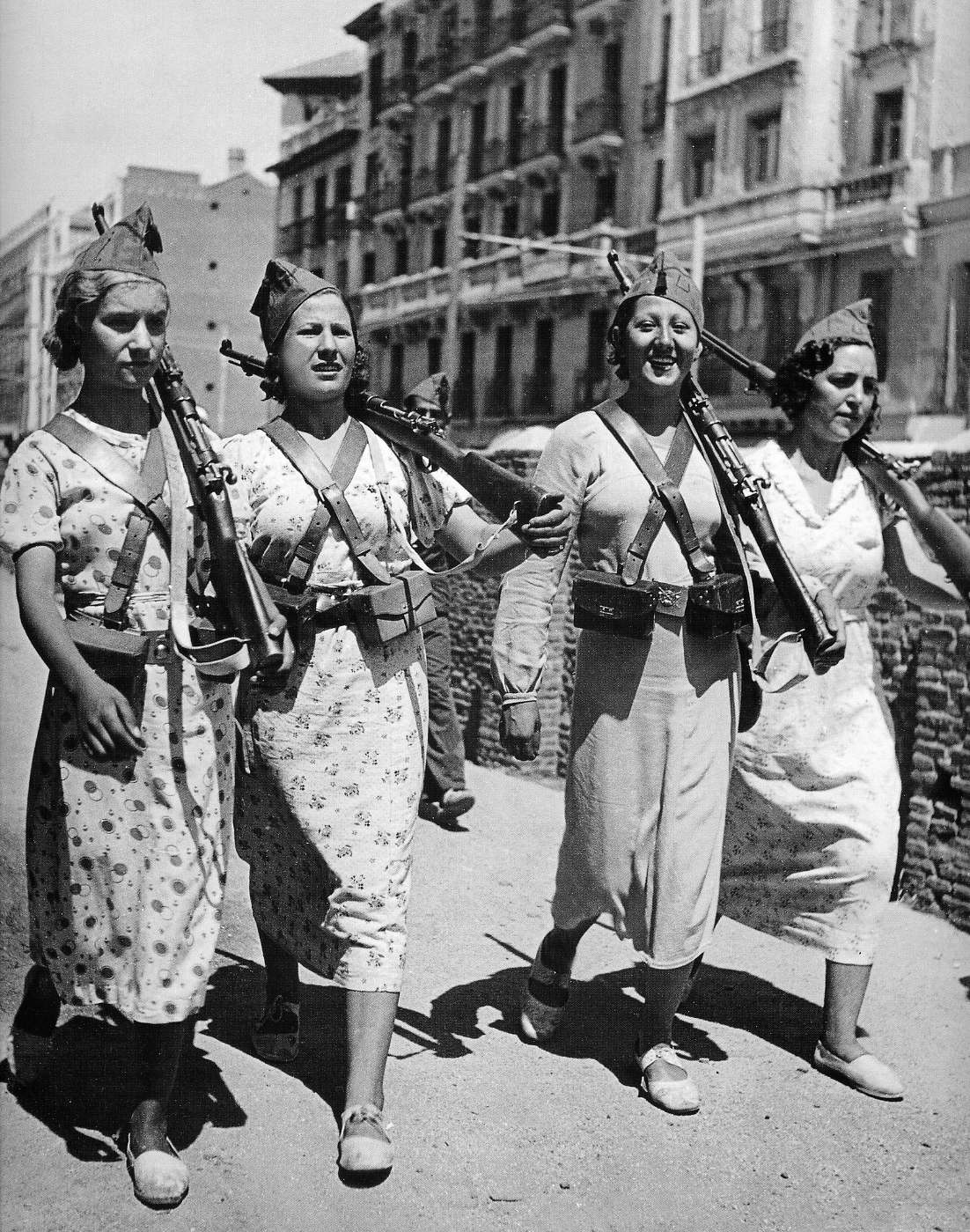
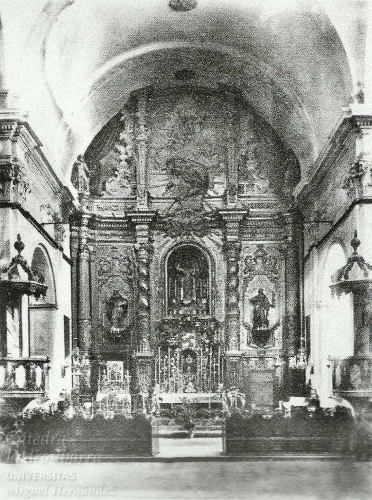
The Church of the Savior of Elche - before and after being destroyed by revolutionaries ... along with some 20,000 other Spanish churches which suffered the same fate during the revolution
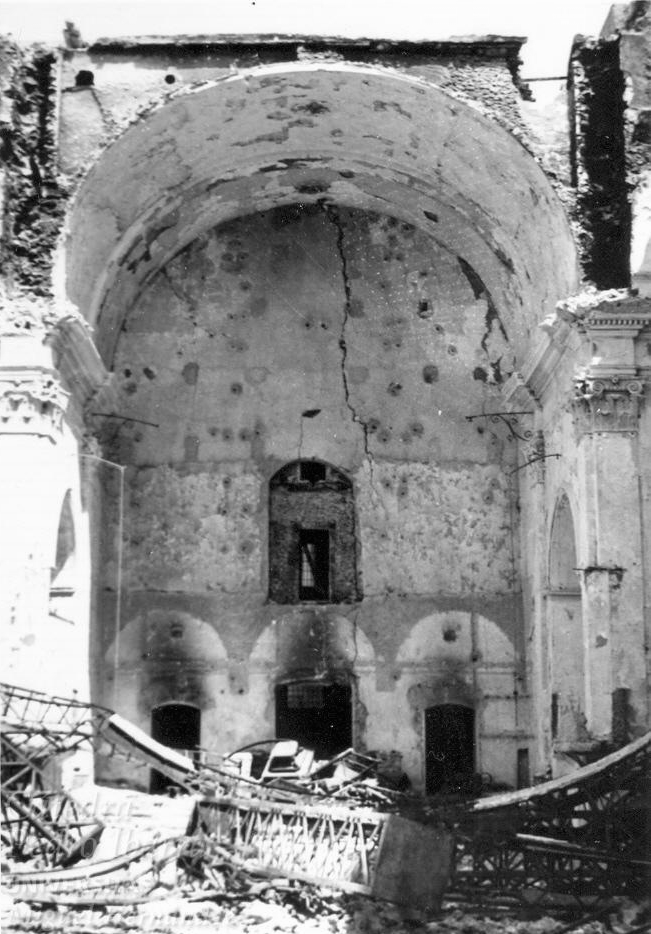
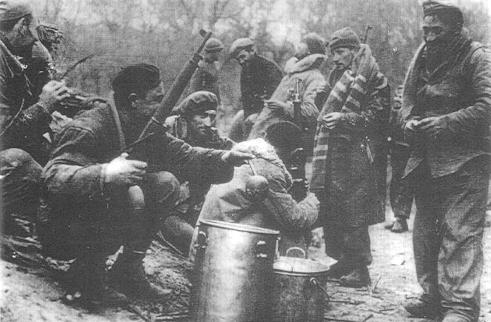
Republican International
Brigade troops at Casa de Campo on the western outskirts of Madrid during the battle against
Franco's invading Nationalist forces - November 1936
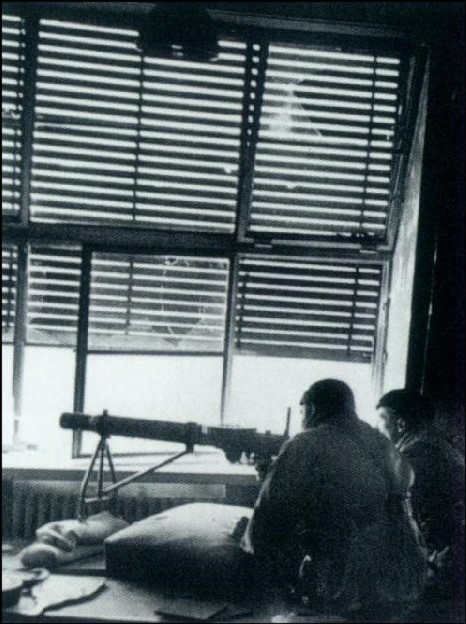
Members of the International Brigades fighting in the School of Medicine in the University City during the Battle of Madrid, December 1936.

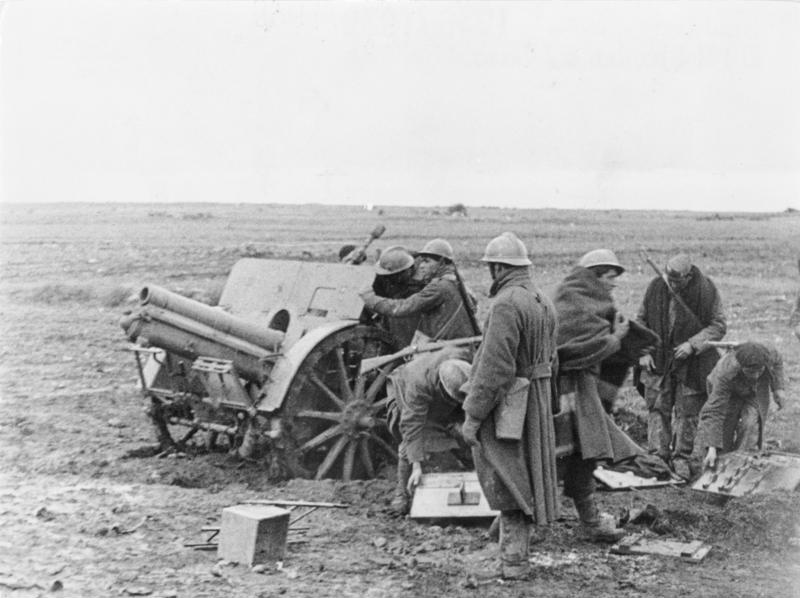
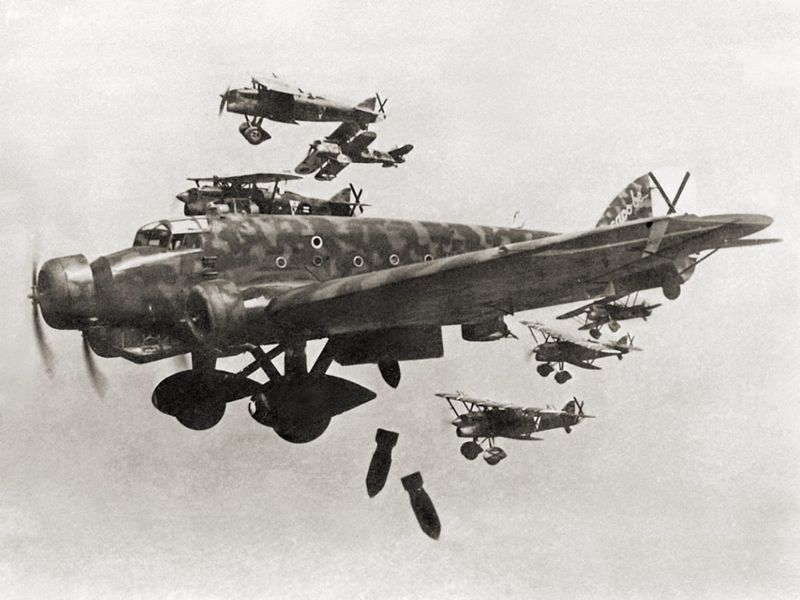
The bombing of Guernica was an aerial attack by the German Luftwaffe squadron known as the Condor Legion against the Basque city of Gernika (Spanish: Guernica).
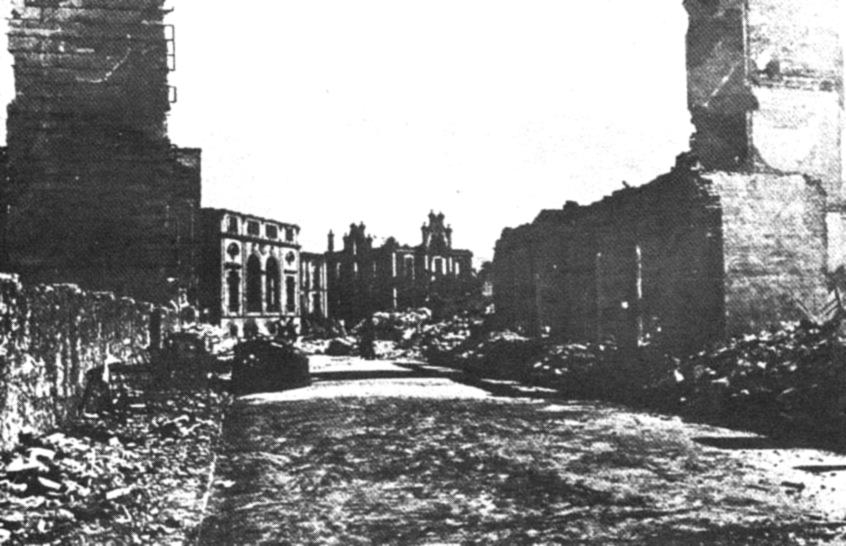
The huge mural was produced under a commission by the Spanish Republican government to decorate
the Spanish Pavilion at the Paris International Exposition (the 1937 World's Fair in Paris)
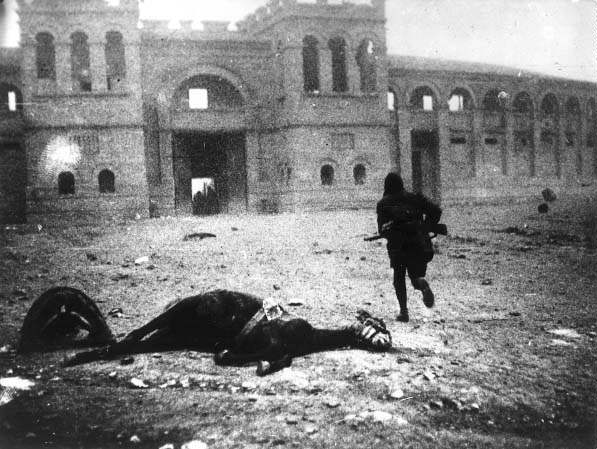
A.B.C. Press Service
FRANCO'S VICTORY (MARCH 1939) |
| Bit
by bit the Nationalists began to gain ground against the
Republicans. Catalonia was finally taken by Franco at the
beginning of 1939 and Franco’s forces then turned again to
Madrid. But officers in the Republican army rose up in March
against the Republican prime minister and created a junta to negotiate
a peace with Franco. Communists now turned on their own
Republican officers ... making it easier for Franco to move on Madrid,
which was now in a state of political confusion. By the end of
the month all of Spain was under Franco’s absolutist control. Countless thousands of Republicans were imprisoned, some 32 thousand executed, and half a million fled the country ... mostly to France where they were immediately put in internment camps (the shaky French Republic was in no condition to be able to absorb such a massive demographic invasion). There they were held even as World War Two broke out that fall ... and with France’s surrender to Hitler in June of 1940 were turned over to the Germans, who carted them by the thousands off to the Mauthausen concentration camp ... where 5 thousand died. |
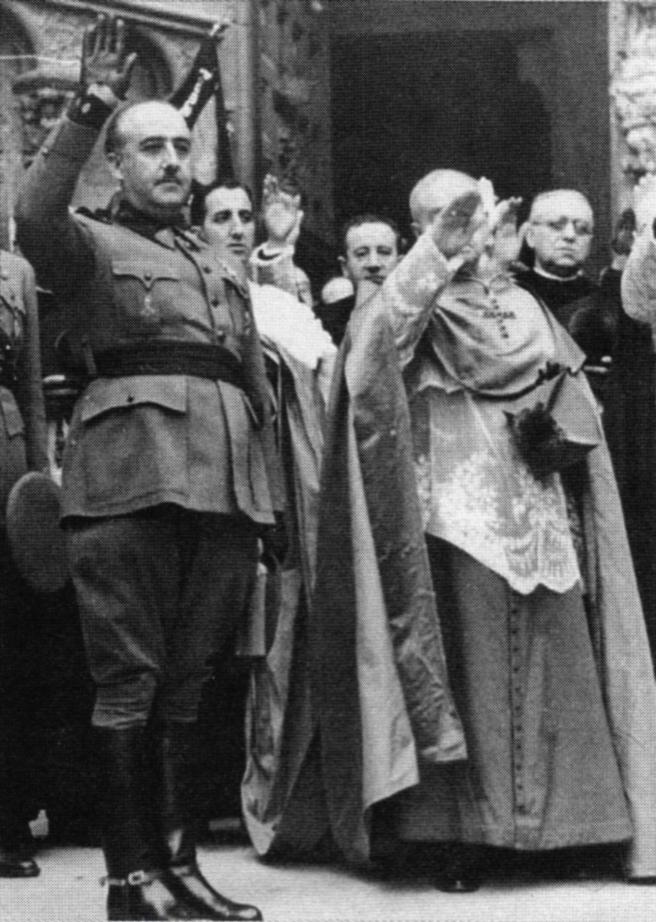
The Spanish Catholic Church
demonstrating its support of the Falangist (Fascist) General Francisco Franco
in his overthrow of the democratically elected Spanish Republican government
- November 1938

Go on to the next section: World War Two




